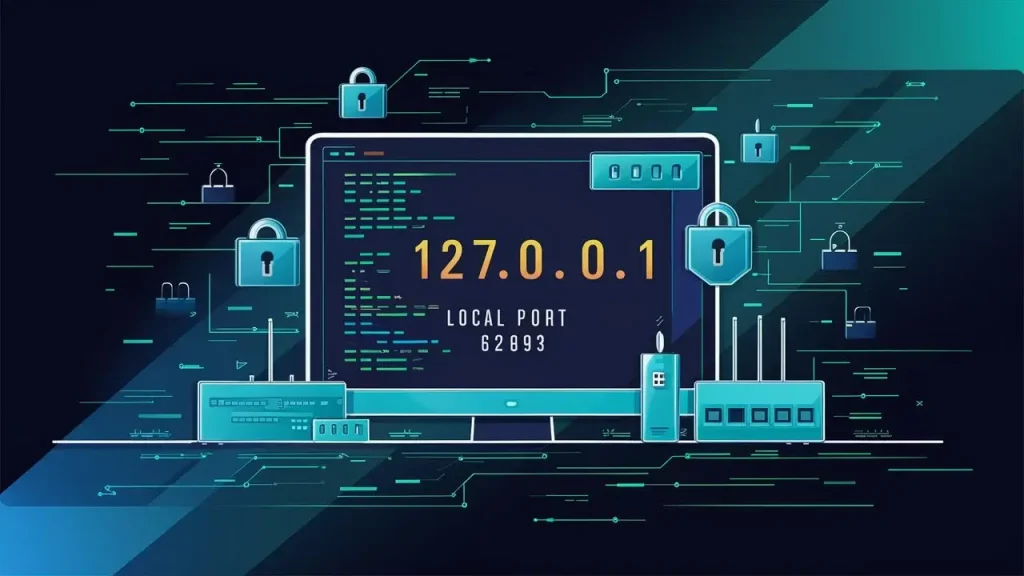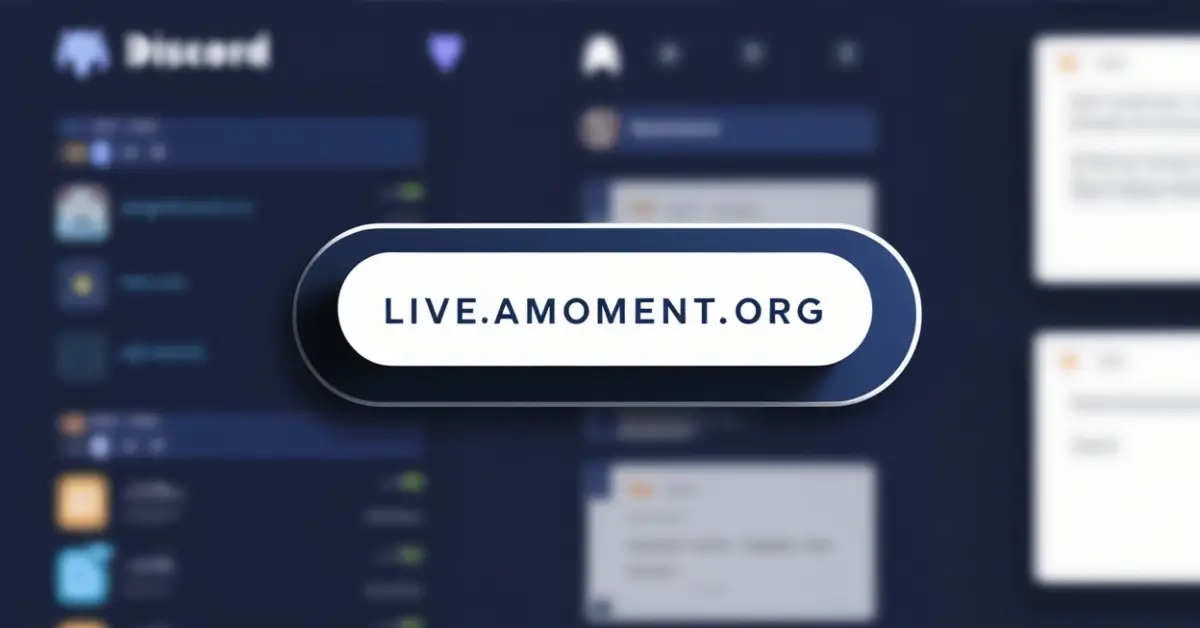In the world of web development, few things are as crucial and as commonly encountered as 127.0.0.1:62893. This local IP address combined with a specific port number forms the backbone of testing environments for developers working to build seamless websites and applications.
It’s the silent powerhouse that allows developers to create, test, and debug their work without the risk of exposing it to the broader internet. But what exactly is 127.0.0.1:62893, and why is it so important? Let’s dive into the depths of this critical component and explore how it can revolutionize your development process.
What is 127.0.0.1:62893?
127.0.0.1:62893 refers to a specific combination of a local IP address (127.0.0.1) and a port number (62893). The IP address 127.0.0.1 is a loopback address, often known as localhost, which means it is used by a computer to refer to itself. This enables developers to test applications locally without needing an external server.
The port number, in this case, 62893, acts as a gateway through which data passes to and from the application you are testing. Different services use different port numbers, and port 62893 is assigned to the specific service running locally. This powerful combination ensures that you can test your work efficiently and securely.
Understanding Localhost (127.0.0.1)
The term localhost, mapped to 127.0.0.1, is an integral concept in networking and web development. Essentially, localhost allows a machine to communicate with itself via the TCP/IP protocol. In a development scenario, this means that a developer can run a server or service on their local machine and access it using this loopback IP address.
127.0.0.1 acts as a standard IP for loopback traffic. It simplifies things by providing a unique way for the system to handle local testing. This is particularly useful in web development, where testing needs to be done before pushing code live. Using localhost ensures developers can refine their applications in a risk-free environment.
What is Port 62893 and Its Purpose?
A port in networking functions as a doorway through which data is transmitted. The number 62893 is just one of thousands of available ports that can be assigned to a service running on your machine. By using port 62893, developers ensure that data transmitted via localhost is kept separate from other applications running concurrently on different ports.
This enables multiple services to be run on the same IP address without conflict. Developers often configure ports to suit specific needs, ensuring optimal efficiency and smooth communication between the server and client.
How Localhost Works in Web Development
In web development, localhost is a critical tool for running and testing applications on a local machine. When you develop a web application, you often want to see how it functions without the hassle of deploying it to a live server. This is where 127.0.0.1 comes into play, acting as a local web server for testing your code.
Local development environments leverage 127.0.0.1 to simulate a server-client relationship, allowing developers to write and test code before going live. This boosts productivity and ensures that bugs and other issues are caught early in the development process.
Why Use 127.0.0.1 for Local Testing?
The beauty of 127.0.0.1 lies in its simplicity. Using this local IP address allows developers to safely run and debug their applications without worrying about external security risks. It acts as a sandbox where changes can be made and tested before launching.

By using localhost, developers can avoid many pitfalls associated with testing applications in live environments. Furthermore, it is a secure method, as the traffic routed through 127.0.0.1 never leaves the local environment, reducing the chance of exposing sensitive data.
The Role of Ports in Localhost Communication
Ports, like 62893, are essential for facilitating communication between different services running on the same machine. While an IP address identifies the device, the port number specifies which service is being accessed. Think of the port as a channel that directs the right data to the right service.
Every application or service needs a unique port to avoid conflict. When developers configure their local server, they choose a port number, such as 62893, to route the traffic correctly. This seamless communication is what makes localhost so powerful and adaptable for various development needs.
Configuring and Using Port 62893 for Localhost
To configure port 62893 for localhost, developers need to specify it in their server setup files or through the command line. This port number can be assigned to any service or application running locally, making it easily accessible via 127.0.0.1:62893.
Once configured, the local server listens on port 62893, allowing developers to access their applications by typing 127.0.0.1:62893 into the browser’s address bar. This straightforward process simplifies local development and makes it easy to monitor and test services.
Networking Basics: The Loopback Address Explained
The loopback address is essential in networking because it allows a device to send and receive its own data packets. This internal traffic routing enables services to run locally and communicate with themselves without involving external network connections.
In the case of 127.0.0.1, this loopback interface acts as the machine’s self-address, ensuring that testing and debugging can happen entirely within the system. The beauty of the loopback address is that it helps developers control traffic and make necessary adjustments without affecting other applications or devices.
How to Access Localhost via 127.0.0.1:62893
To access your local application via 127.0.0.1:62893, simply open your web browser and type this address into the URL bar. This will direct the browser to the locally hosted application on your machine. The 62893 port ensures the right service is accessed, preventing clashes with other processes.
This method of accessing a local service makes it incredibly simple for developers to view their projects in real time. Any changes made to the code are reflected immediately, and since the environment is local, there are no delays or external factors to slow down the process.
Common Use Cases for 127.0.0.1:62893
The combination of 127.0.0.1 and port 62893 is widely used in several development scenarios. A common use case is web development, where developers build and test websites or web apps on their local machines before deploying them live.
Another use case involves testing API requests or managing local databases. By running the necessary services on a local machine, developers can experiment with different configurations and ensure everything works correctly without impacting the live system.
Localhost Security Considerations
While localhost is typically safe since it’s a local environment, it’s important to consider security when setting up services, even on 127.0.0.1. Ensure that any sensitive data processed during local testing remains protected, and avoid opening unnecessary ports.
In cases where multiple users are on the same network, misconfiguring the firewall settings can expose your localhost to external threats. To prevent this, ensure that port 62893 is only accessible locally and is protected by the appropriate security protocols.
Troubleshooting Issues with 127.0.0.1:62893
If you encounter issues with 127.0.0.1:62893, it’s often related to misconfiguration. Double-check your server setup to ensure that port 62893 is properly assigned and not blocked by any firewall settings. Another common problem is that the service you’re trying to access may not be running, so make sure all relevant services are started.

Testing local network settings and reviewing TCP/IP configurations can also help resolve connection issues. Network diagnostic tools can further assist in pinpointing the source of the problem.
How Localhost and Loopback Work Together
Localhost and the loopback interface work in harmony to facilitate internal communication. When a machine communicates with itself via 127.0.0.1, it’s using the loopback feature to route traffic internally. This is a core function in networking, as it allows for local testing without requiring an external network connection.
This interaction is especially useful in scenarios like web development, where running multiple services locally is common. Each service is assigned a different port, ensuring there’s no overlap, and enabling seamless communication through the loopback.
Using Port 62893 for Local Web Server Setup
Port 62893 can be used to set up a local web server, enabling you to run your web applications directly on your machine. This ensures that you can view your work in a real browser environment, simulate user interactions, and debug any issues that arise.
To do this, configure your local server to listen on 127.0.0.1:62893. This ensures that all requests sent to the local machine are routed to the correct service, allowing for efficient development.
127.0.0.1:62893 in Web Development and Testing
In web development, 127.0.0.1:62893 plays a central role in testing applications before they go live. By running a local development server on localhost, developers can ensure their code works as expected without exposing it to the broader internet.
This testing environment is crucial for catching bugs, improving performance, and ensuring the site or app meets user expectations before deployment. By using localhost, developers can iterate rapidly and refine their code.
Configuring Firewall for Localhost Connections
When running services on localhost, ensure your firewall is configured to allow connections through the appropriate ports. Blocking or misconfiguring port 62893 can prevent access to the local service, disrupting the development process.
It’s also wise to configure the firewall to block any external access to your local environment. This helps ensure that the localhost services remain secure and inaccessible to potential external threats.
Networking Tools to Diagnose Localhost Issues
Several network diagnostic tools can assist in troubleshooting issues with 127.0.0.1:62893. These tools help developers monitor traffic, check configurations, and resolve any conflicts that arise. Tools like Wireshark, netstat, and traceroute can be incredibly useful for diagnosing networking issues on localhost.
Using these tools, developers can track incoming and outgoing traffic, ensuring that services are correctly routed and that TCP/IP configurations are correct.
Also Read: 127.0.0.1:49342
Understanding HTTP Requests on 127.0.0.1:62893
When working on a local web server, all HTTP requests are routed through 127.0.0.1 and a designated port like 62893. This ensures that any data transmitted from the browser to the server remains within the local machine.
Developers can test various HTTP methods, such as GET and POST requests, to see how their applications respond. This helps in identifying and resolving issues with routing, API endpoints, and form submissions before going live.
Local Development Environments Using 127.0.0.1
Many popular development environments, such as XAMPP, WAMP, or Node.js, utilize 127.0.0.1 for local testing. These environments simulate a server-client relationship, allowing developers to run applications, databases, and APIs locally before deploying them.
Using these tools, developers can efficiently create, test, and modify their applications on a local machine. By leveraging the loopback interface and designated ports like 62893, they ensure their applications are ready for the real world.
Best Practices for Testing Web Applications Locally
When testing web applications locally, always ensure that your localhost environment is set up correctly. Use secure ports, keep firewall settings updated, and thoroughly test all functionalities in the local environment. Regularly review network configurations and update services as needed to prevent conflicts or security risks.
By following these practices, you can maintain a smooth, efficient, and secure local testing process that boosts productivity and ensures optimal results.
Quick Facts
- 127.0.0.1:62893 refers to a local IP address and port number used in development.
- 127.0.0.1 is a loopback address, meaning it points back to the same machine.
- Port 62893 is used to route traffic to a specific service running locally.
- Developers use this combination to test web applications safely on their local machines.
Final Thoughts
The power of 127.0.0.1:62893 lies in its ability to facilitate efficient, secure, and seamless local testing for developers. By using this local IP address and port combination, developers can test and refine their applications before deploying them, ensuring a polished final product. Whether you’re a seasoned developer or just starting, mastering localhost and understanding port communication is a critical skill that will empower you to create exceptional web experiences.
FAQs
Q1: What is 127.0.0.1?
A: 127.0.0.1 is the loopback IP address that allows a machine to communicate with itself, typically referred to as localhost.
Q2: Why is port 62893 important?
A: Port 62893 is a specific channel through which local services communicate on the machine. It ensures that the right service is accessed during development.
Q3: How do I access my local web server using 127.0.0.1:62893?
A: Simply type 127.0.0.1:62893 in your web browser’s address bar to access the local service running on that port.
Q4: Is localhost secure?
A: Yes, since traffic on localhost doesn’t leave your machine, it’s generally secure. However, ensure that your firewall settings are properly configured to avoid potential external threats.
Q5: Can I use any port number?
A: Yes, you can use any available port number for local development. Just ensure it doesn’t conflict with other services running on the machine.










